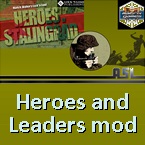asl3d
Posts: 6531
Joined: 2/6/2017
Status: offline

|
Type 99 Satchel Charge
The Japanese, like the Germans and to a lesser extent, the British, had experimented with magnetic anti-tank weapons. Unlike both of them though, Japan was successful. The primary magnetic anti-tank weapon was the deceptively simple Model 99 Hakobakurai ‘Turtle’ mine, reminiscent in shape to a turtle. The Japanese had, from about May 1942, obtained shaped charge technology from the Germans. Appearing on the battlefield from 1943 onwards, the Hakobakurai weighed just over 1.2 kg and was filled with 0.74 kg of cast blocks of Cyclonite/T.N.T. arranged in a circle. A further development of it, known as the ‘Kyuchake Bakurai’, was rumored and capable of being thrown up to 9.1 m, although as of October 1944, no examples were known to have been found. This Type 99 anti-tank mine resembles a disc-shaped canvas cloth bag, with a snap-fastened flap on the outer edge for inserting eight blocks of explosive. There are also four equally spaced permanent magnets attached to the outer edge of the mine and an external fuze. When used, the safety pin was pulled, the fuze cap given a sharp tap, and the mine was then placed or tossed on armour plate within a range of ten feet, there being a delay of about five to six seconds. Four magnets were attached to the casing made of hemp cloth, along with an external fuze. The fuze had a time delay, which enabled it to be used as an anti-tank hand grenade, or a demolition charge. Once the safety pin was removed, it was armed, striking the fuze ignited a powder delay train. The mine detonated after a five to ten seconds delay, giving enough time for it to be thrown. Although “the device appears to be workable,” using Type 99 hand grenades in this way as detonators would cause a delay. Presumably it would detonate quickly enough to stop a slow-moving tank that ran over it. Placed against thin points of armor or on the hatch of a tank, this mine, when detonated, could penetrate 20 mm of steel plate. With one mine on top of another, this could be increased to 30 mm, although, depending on the armor it was on, it could cause damage to a plate thicker than that. The mine was not a shaped charge and 20 or even 30 mm of armor penetration was not much use against anything but the lightest of Allied tanks deployed against the Japanese, such as the M3 Stuart, unless they were placed in a vulnerable spot such as underneath, on the rear, or over a hatch. However, British testing and examination of these mines reported that, although the penetration was poor, just 20 mm, the shockwave from the blast could scab off the inner face of an armor plate up to 50 mm thick, although the penetration was still limited by it not being a shaped charge. The result also did not include vehicles designed with an inner ‘skin’ either, but the results were still substantial, as it meant that all of the Allied tanks used in the Pacific theatre were vulnerable to these mines depending on where they were placed.

 Attachment (1) Attachment (1)
_____________________________
Semper fidelis
|
 Printable Version
Printable Version































 New Messages
New Messages No New Messages
No New Messages Hot Topic w/ New Messages
Hot Topic w/ New Messages Hot Topic w/o New Messages
Hot Topic w/o New Messages Locked w/ New Messages
Locked w/ New Messages Locked w/o New Messages
Locked w/o New Messages Post New Thread
Post New Thread